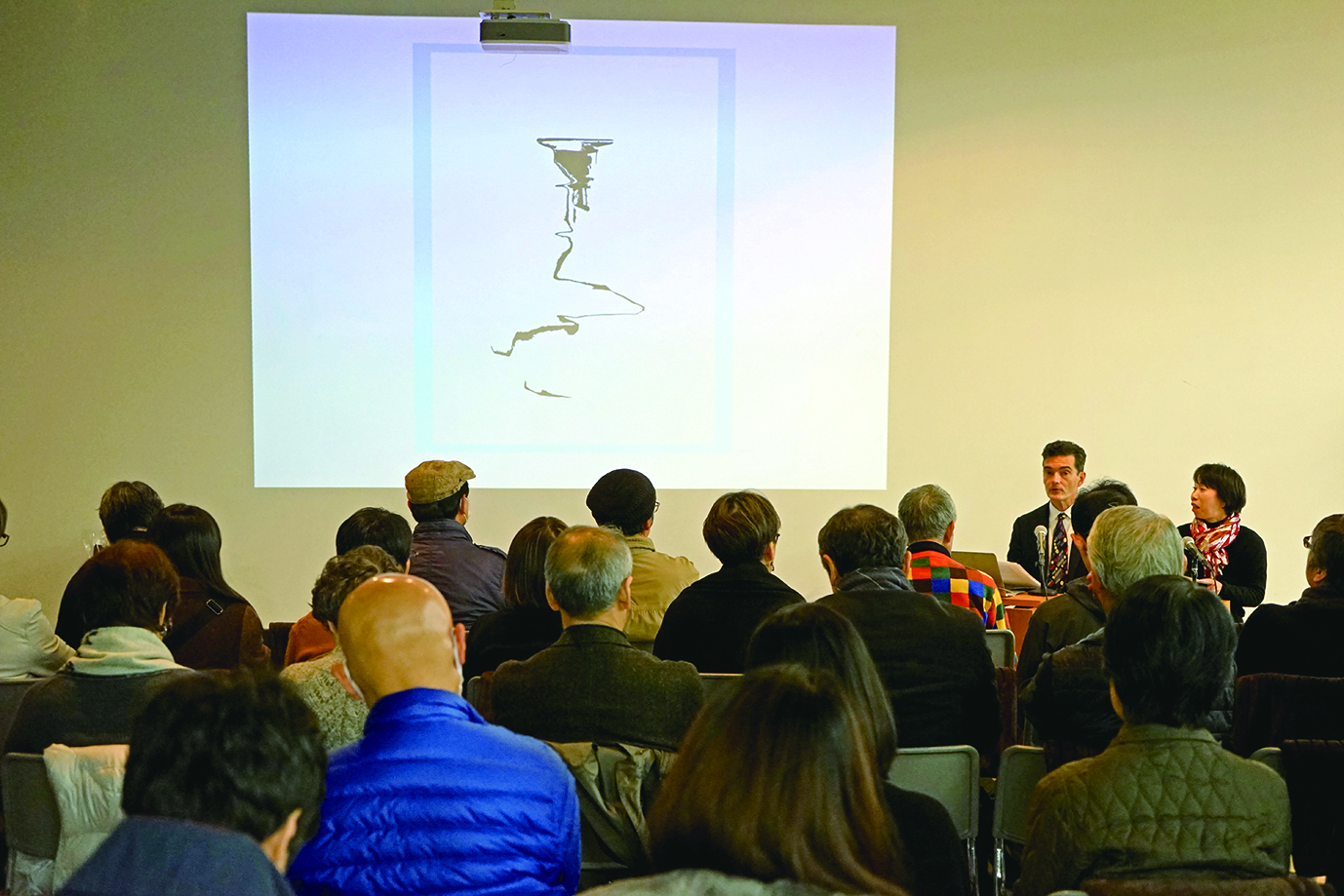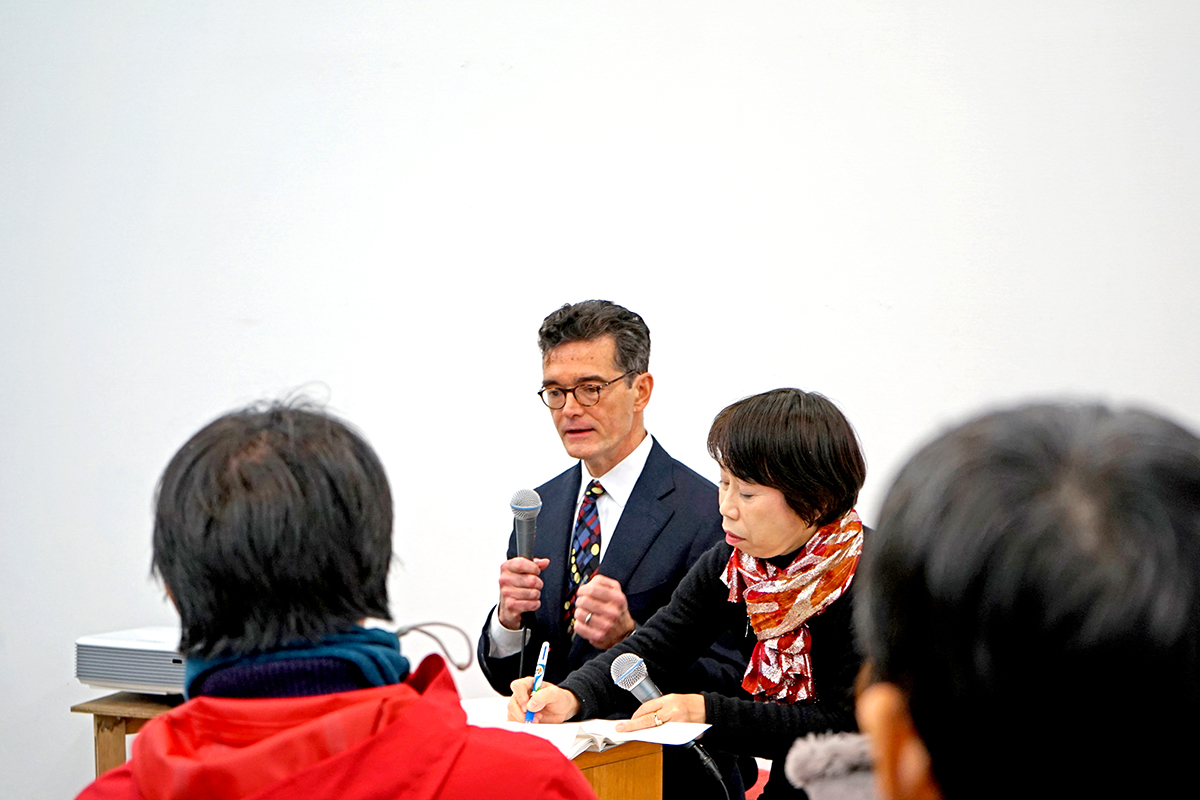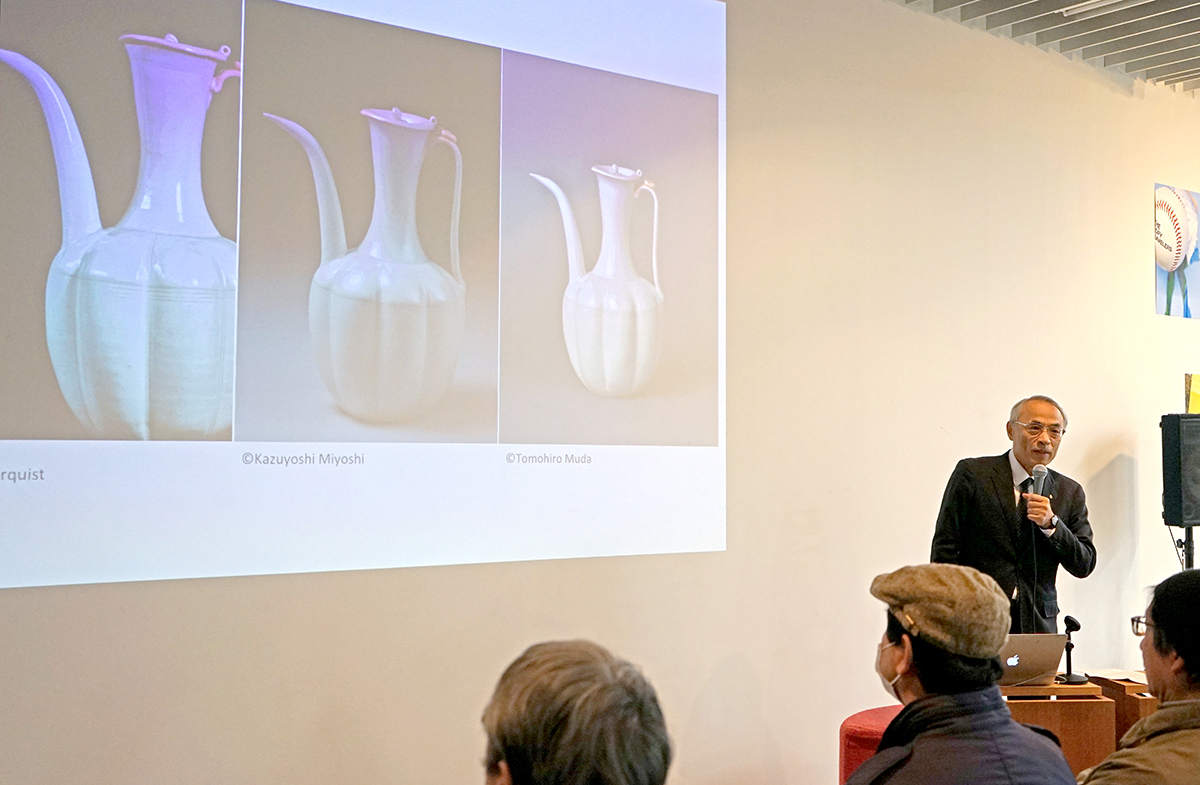Lab Cafe Special featuring Creative Island Lab Nakanoshima 05
Encountering Contemporary Art and Old Ceramics
Date and time: December 9, 2018 [Sun] 13:00 to 16:30
Venue: Art Area B1
Capacity: 50 people (free of charge, first-come-first-served basis on the day, free entry and exit)
Guest: Eric Zettaquist (artist), Tetsuro Degawa (Director of The Museum of Oriental Ceramics, OSAKA), Haruna Kuno (Imura Art Gallery), Keisuke Takayasu (Associate Professor, Graduate School of Letters, The University of Osaka)
Cafe Master: Tomomi Miyakawa (Curator, The Museum of Oriental Ceramics, OSAKA), Tomoeko Kinoshita (Associate Professor, The University of Osaka Co-creation Organization (Art Area B1)
In The Museum of Oriental Ceramics, OSAKA, known for one of Japan's leading ceramic collections, the exhibition "Object Portraits by Eric Zetterquist" is currently being held. In this exhibition by Eric Zettaquist, an American artist who works on contemporary works based on old Japanese ceramics, a new work on 34 ceramics held by the museum is released. At the same time, Zetta Quist, Haruna Kuno, staff of Imura Art Gallery, Keisuke Takayasu, associate professor of The University of Osaka, Tetsuro Degawa, director of the museum, and Tomomi Miyagawa, curator of the museum, gave a presentation and talk "Encountering Contemporary Art and Old Ceramics" on December 9.

In Part 1, "Portrait of Things", Zettaquist gave a lecture on his work and his own activities. Zettaquist, born in Ohio in 1962, has been interested in Japan since childhood, and studied abroad in Kagoshima Prefecture in high school. It is said that the experience of many ceramics, antiques, and modern Western art became the gateway to interest in old ceramics and art.
After studying at Sophia University while at New York University, he started working as a staff member of the folk art Gallery, run by contemporary artist Hiroshi Sugimoto, and worked not only for the gallery but also for Sugimoto's creative activities. Mr. Sugimoto is an artist known for his works related to the history of Japanese art and archeological artifacts and the cultural history of mankind. While being influenced by this up close, Zettaquist pioneered his art.
And he ended up paying attention to the "form" of ceramics. Rather than capturing the whole picture of the object in nature, we are developing a series that closes up parts and reduces the gloss and contours generated by lighting to a minimal world of two colors in black and white by image processing. Using the techniques and theories of minimalism and abstract expressionist paintings, which are artistic trends developed in the United States, Zettaquist says that he hopes to share the insightful thinking of focusing on "things" with the viewer, and hope that the work will become a bridge between East and West and the ancient times, separated geographically and time, and describe such ideas as "fulling art". In a modern era where diverse values intersect, humanity has a universal sense that loves and impresses the same beauty in a long time of thousands of years. He said that the attitude of "evangelism" to convey and share such sensibilities and joys is my own sexuality.

In the second part of Zettaquist's presentation, Mr. Idekawa, Director of The Museum of Oriental Ceramics, OSAKA, introduced the founders and masters of modern photography such as Daguerre and Man Ray, and described Zettaquist's work as a new way of expression that reflects new technologies. Mr. Miyagawa, a curator of the museum, also accepted ceramics mainly in Japan since the modern era.……Explains the transition in which the view of ancient ceramics changed due to Western values. Before his genealogy, he described the uniqueness of Zettaquist, who develops his work using abstract expression art from the latter half of the 20th century as a measure of values.

Mr. Kuno and Mr. Takayasu's presentation in Part 3 was a critical supplement to the interpretation developed in Part 2. Mr. Kuno stated that Zettaquist's interest is not necessarily limited to "form" and can be defined by the series of "selections" that occur in the work process such as shooting, image processing, and output size. Mr. Takayasu also questioned what "form" is because Zettaquist's work attracted attention to the "form" itself. When we hear only the word "form", we recall the outline of things, but we explained by several examples that even if we look at the outline, we capture the relationship between the earth and the figure. In object portraits, he said that the "shape" of the shadow emerges, the "shape" of the earth emerges, and the "shape" of the non-type "shape" is dynamic.
After that, a question-and-answer session with the audience and a short discussion by all the speakers were held, and the talk lasted for about four hours was heated. Art plays a variety of roles, but as Mr. Degawa showed in his presentation, there are times when the scrolls and emakimono functions as indirectly conveying the vision and values of people in a certain era to future generations. Similarly, Zettaquist works, which use the functions of digital technology to show forms and values that could not be seen before, may also archive the thoughts and ideas that circulated in the early 21st century. It was an event filled with the feeling that old ceramics and contemporary art were connected in a long time.
●Talk content
Portrait of Part 1 | 13:00-14:00
Eric Zettaquist (Author at the "Object Portrait" exhibition)
*Japanese sequential interpreter available
Part 2: How to See Old Ceramics? 14:20-15:20
Tetsuro Idekawa (The Museum of Oriental Ceramics, OSAKA)
Tomomi Miyakawa (The Museum of Oriental Ceramics, OSAKA)
Part 3 Inspired by Old Ceramics | 15:30-16:30
Haruna Kuno (Imura Art Gallery)
Keisuke Takayasu (The University of Osaka)